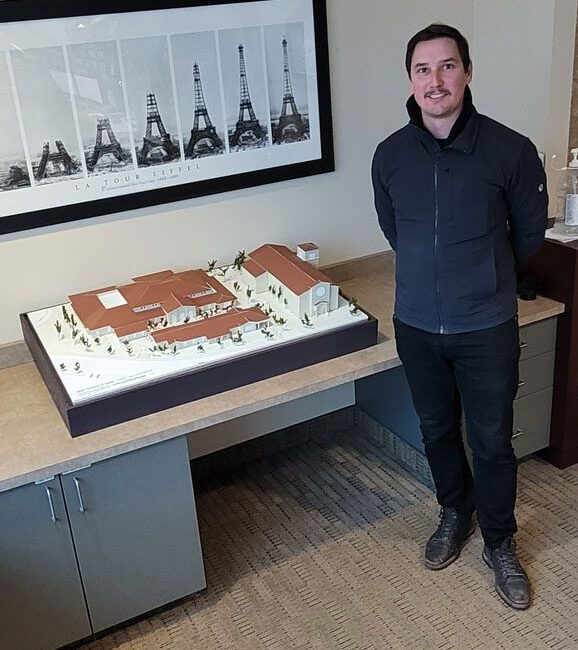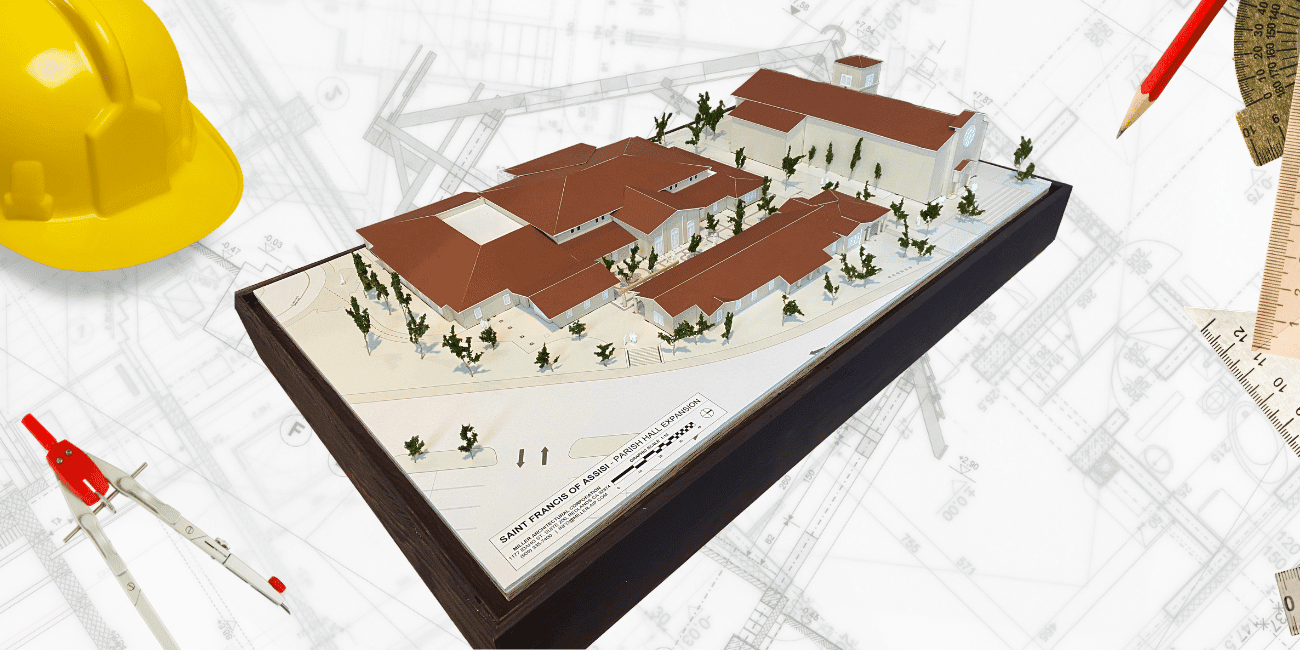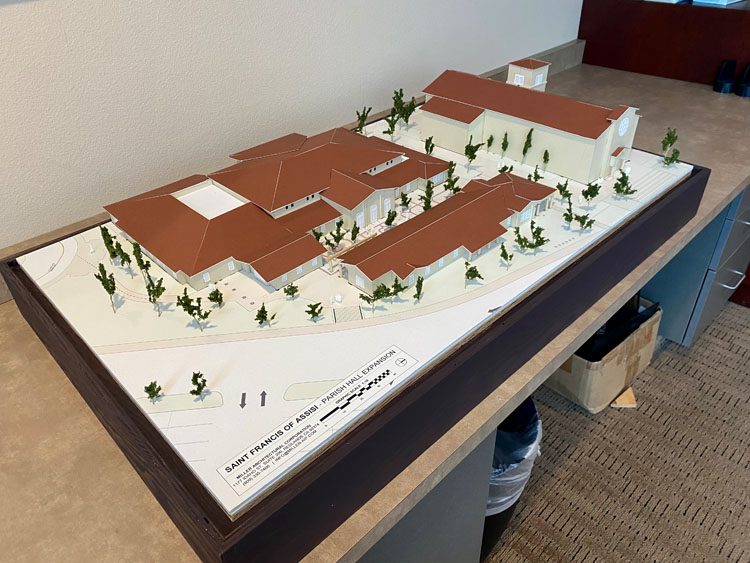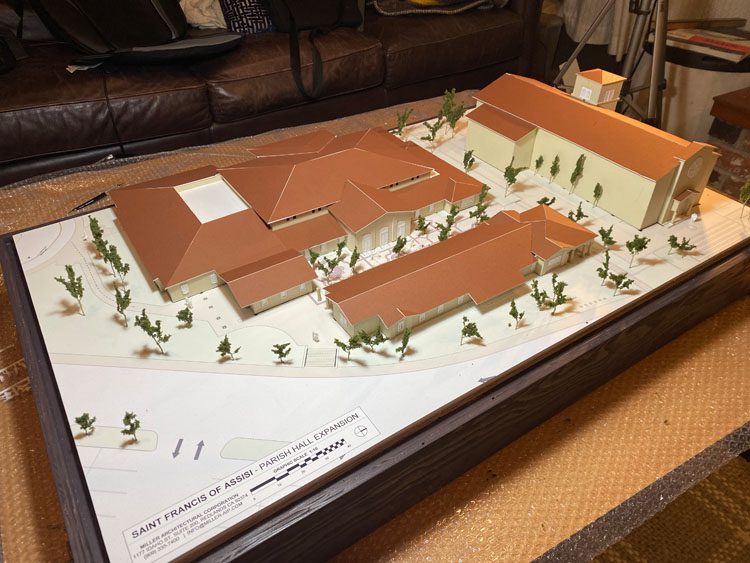Modernizing the Construction Industry with 3-D
Client Spotlight:
Christos Hardt, Miller Architecture
Product Highlight:
3-D Architectural Models
Our world is three-dimensional, characterized by height, length, and width. However, as humans, we perceive only two dimensions through our eyes. The sense of depth we perceive is an evolutionary adaptation, allowing us to see the world with our forward-facing eyes.
We often rely on charts, diagrams, sketches, or colorful renderings to aid in understanding and visualization. While these help in the planning stage, our two-dimensional brains may need help grasping the concept. This is where 3D architectural models become invaluable. These scale models serve as communication tools, presenting structural plans in a visually appealing and easily understandable format. They are crucial in marketing architectural and design services, enhancing sales efforts, and conveying the big picture to clients.
What Is an Architectural Model?
Architectural models offer a 3D representation of building designs, allowing visualization of scale and construction concepts. Advancements in computer technology have popularized the use of 3D models for showcasing architectural ideas, replacing traditional manual replication methods.
One notable model creator is Christos Hardt of Miller Architecture in Redlands. With expertise in creating small-scale models, Christos recently completed a Church building model. Seeking a solution to display the floor plan and surrounding area, he approached A&I with his idea. We assisted by printing the foundation and base of the model on a firm substrate, enabling Christos to construct the church on top. He used hard-pressed cardboard to form the walls using high-quality tools and careful precision. He emphasized the importance of steady hands when working with intricate pieces to ensure safety and accuracy in small-scale replicas.

Challenges and Benefits of 3D Modeling
Creating 3D models is time-consuming, especially for complex designs involving modeling, texturing, and animating tasks. This can pose challenges when working on projects with tight deadlines or limited resources. For instance, Christos spent six days completing his latest church-building model.
However, 3D models offer architects a quick and cost-effective way to represent designs, improving the overall concept physically. They provide stakeholders, such as investors or buyers, with a realistic depiction of how the building would appear on the property. Small-scale models are also utilized in the landscape industry to demonstrate the placement of elements like shrubs, trees, walkways, and lighting.
Sharing Expertise with a New Generation
Christos volunteered his model-making expertise during Career Day at Loma Linda Academy in the City of Loma Linda. He taught students how to design and construct small-scale houses using inexpensive materials readily available at home, making them ideal for school projects that foster creativity.
Architectural models can be crafted from various materials depending on the project stage. Workable options include:
- Cardboard or card stock: which is easy to cut and shape
- Wood materials: like balsa wood or basswood, known for their carving capabilities
- Foam sheets: offer easy cutting and sturdiness, while cork sheets add texture to models
- Cork sheets: are flexible, easy to handle, and add texture to your model
- Metal: such as aluminum, is suitable for building structures and showcasing finishes in architectural models
Architects are key contributors to property development, involved throughout the entire process. In today’s architecture industry, 3D modeling has transformed how architects present their designs. Instead of relying solely on 2D drawings, they can now use 3D models to provide comprehensive visual representations from different perspectives. These models incorporate lighting, furniture, and landscaping, resembling intricate modern-day dollhouse designs, and greatly influence the success of architectural ventures.
3D Models Offer Numerous Benefits to Your Project
- Visualize and sell: Architects use models to showcase project ideas, communicate with clients, and present real estate proposals to the public.
- Save time and money: Models help identify construction challenges and allow inspectors to spot potential issues in the design phase, leading to cost and time savings before construction begins.
- Aid in fundraising: A well-built model visually represents your idea, assisting in raising funds for project financing.
We can print your design parameters on a sturdy substrate if you’re considering a 3D model for your home, office, or school project. This includes faux designs for brick walls, stone fireplaces, roofs, windows, landscaping elements, and more. We can provide printed floor plans for office design to help optimize space allocation. Visualizing your concept or idea can be simplified with A&I.
The Future and Advancement of 3D Modeling
According to Christos, hands-on 3D model-making is gradually becoming less popular as the world becomes more digital, with industries favoring animation. Digital animated 3D CAD drawings and designs have the potential to reach millions of people instantly through social media and online platforms.
3D modeling, achieved through software, creates mathematical representations of objects and shapes. Various industries utilize 3D modeling, including healthcare (prosthetics, arch supports, dental crowns), retail (virtual catalogs, home design software), gaming (avatars, virtual worlds), manufacturing (improved machine designs), and film (special effects, environments).
In recent years, 3D printing has been used to construct diverse structures, from homes to bridges. Dubai plans to build the world’s first 3D-printed mosque, showcasing the ongoing advancements in this field. We hope you found this glimpse into the past, present, and future of 3D models interesting.
“Your imagination is your preview of life’s coming attractions.”
-Albert Einstein









